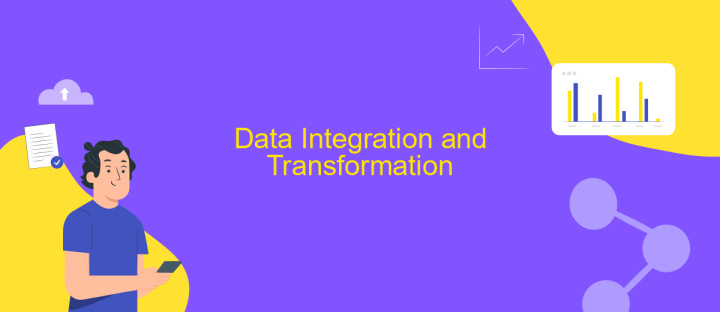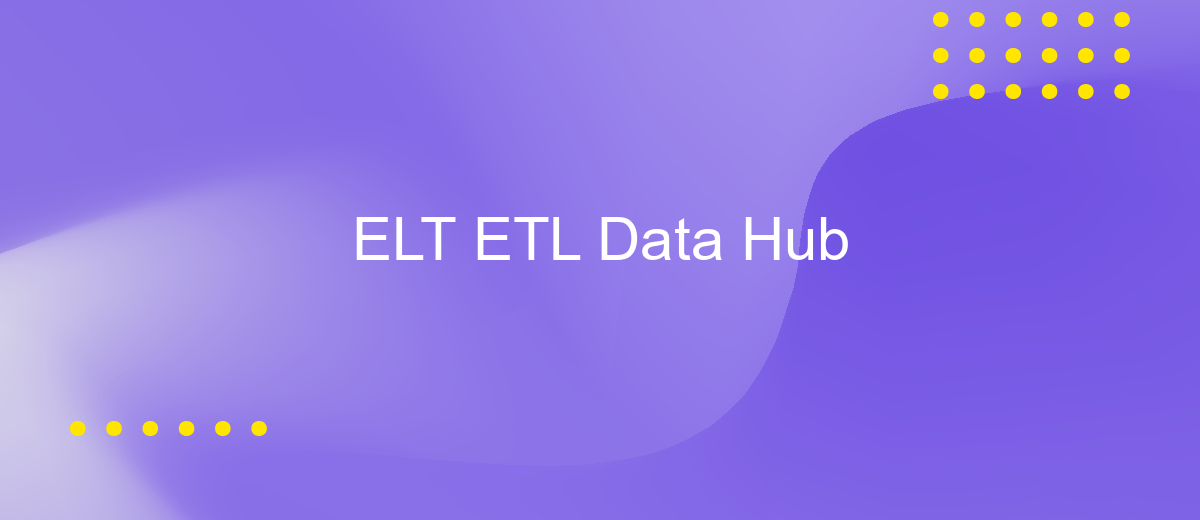ELT ETL Data Hub
In the ever-evolving landscape of data management, the ELT (Extract, Load, Transform) and ETL (Extract, Transform, Load) processes are pivotal for efficient data integration and analysis. This article explores the concept of a Data Hub, a centralized repository that streamlines these processes, enhancing data accessibility, quality, and governance to drive informed decision-making and business success.
ELT Architecture
ELT architecture involves extracting data from various sources, loading it into a centralized data warehouse, and then transforming it as needed. This approach leverages the power of modern data warehouses, which can handle complex transformations and large datasets more efficiently than traditional ETL processes.
- Data Extraction: Collect data from multiple sources such as databases, APIs, and flat files.
- Data Loading: Load the raw data into a centralized data warehouse or data lake.
- Data Transformation: Perform transformations within the data warehouse using SQL or other query languages.
Integrating various data sources can be streamlined using tools like ApiX-Drive, which facilitates seamless data integration and automation. By automating data workflows, businesses can ensure that their data pipelines are reliable and up-to-date, allowing for more accurate and timely data analysis.
Data Hub Implementation

Implementing a Data Hub involves several critical steps to ensure seamless data integration and management. Firstly, it is essential to establish a robust data architecture that supports both ETL (Extract, Transform, Load) and ELT (Extract, Load, Transform) processes. This architecture should be designed to handle diverse data sources and formats, ensuring that data can be ingested, processed, and stored efficiently. Utilizing cloud-based solutions can offer scalability and flexibility, allowing the Data Hub to grow with the organization's needs.
Integration services like ApiX-Drive can significantly streamline the process of connecting various data sources to the Data Hub. ApiX-Drive offers a user-friendly interface and a wide range of pre-built connectors, making it easier to automate data flows between systems. By leveraging such services, organizations can reduce the time and effort required to set up and maintain integrations, ensuring that data is consistently available and up-to-date. Additionally, implementing robust monitoring and governance frameworks is crucial to maintaining data quality and compliance throughout the data lifecycle.
Data Integration and Transformation

Data integration and transformation are critical components in modern data management strategies, ensuring that data from various sources is harmonized and ready for analysis. By consolidating data from disparate systems, organizations can create a unified view that enhances decision-making and operational efficiency. The process involves extracting data from source systems, transforming it into a suitable format, and loading it into a target system, commonly known as ETL (Extract, Transform, Load).
- Extract data from multiple sources such as databases, APIs, and flat files.
- Transform the data to ensure consistency, quality, and compatibility with target systems.
- Load the transformed data into a data warehouse, data lake, or other storage solutions.
Tools like ApiX-Drive facilitate seamless data integration by automating the extraction and loading processes, reducing manual effort and minimizing errors. By leveraging such platforms, businesses can streamline their data workflows, ensuring that accurate and up-to-date information is always available for analytics and reporting. Effective data integration and transformation are essential for deriving actionable insights and maintaining a competitive edge in today's data-driven world.
Data Quality and Governance

Ensuring data quality and governance is crucial for the successful implementation of ELT and ETL processes. High-quality data is essential for accurate analytics, decision-making, and maintaining the integrity of data pipelines. Effective governance ensures that data remains consistent, reliable, and secure across the organization.
To achieve high data quality, it is important to establish robust validation and cleansing mechanisms. These mechanisms help in detecting and correcting errors, inconsistencies, and redundancies in the data. Additionally, implementing data governance policies ensures compliance with regulatory standards and internal protocols.
- Data validation and cleansing
- Consistent data monitoring
- Compliance with regulatory standards
- Access control and data security
Integrating services like ApiX-Drive can further streamline the data quality and governance process. ApiX-Drive offers automated workflows that facilitate seamless data integration, validation, and monitoring. This ensures that data remains accurate and up-to-date, thereby enhancing the overall effectiveness of ELT and ETL operations.
- Automate the work of an online store or landing
- Empower through integration
- Don't spend money on programmers and integrators
- Save time by automating routine tasks
ELT Data Hub Benefits
One of the primary benefits of an ELT Data Hub is the significant improvement in data processing efficiency. By transforming data after loading it into the data warehouse, organizations can leverage the full power of their data storage and processing capabilities. This approach reduces the time and resources required for data transformation, allowing businesses to make faster, data-driven decisions. Additionally, with the separation of extraction, loading, and transformation processes, data integrity and consistency are better maintained, leading to more reliable analytics and insights.
Another key advantage is the flexibility and scalability of an ELT Data Hub. Modern data integration services like ApiX-Drive facilitate seamless integration between various data sources and destinations. This enables organizations to easily adapt to changing data requirements and scale their data infrastructure as needed. ApiX-Drive's user-friendly interface and automation capabilities further streamline the integration process, reducing the need for extensive manual intervention and minimizing potential errors. This ensures that businesses can focus on deriving value from their data rather than getting bogged down by complex integration tasks.
FAQ
What is the difference between ELT and ETL?
How does a Data Hub function in an organization?
What are the advantages of using a Data Hub?
How can I automate data integration processes in my Data Hub?
What are the key considerations when implementing a Data Hub?
Apix-Drive will help optimize business processes, save you from a lot of routine tasks and unnecessary costs for automation, attracting additional specialists. Try setting up a free test connection with ApiX-Drive and see for yourself. Now you have to think about where to invest the freed time and money!


